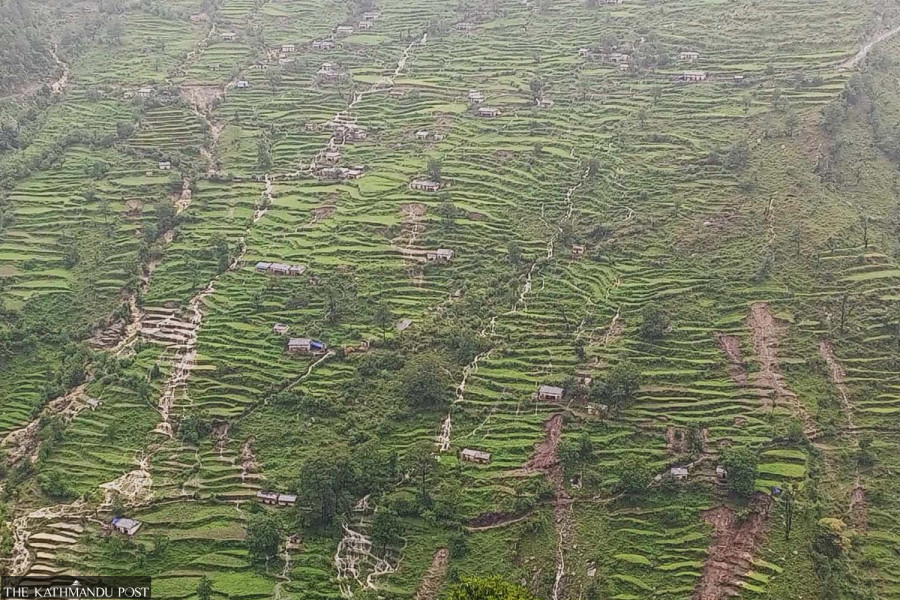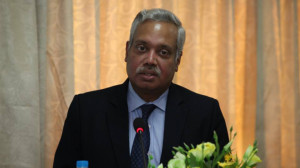National
Monsoon clouds enter Nepal 15 days ahead of schedule
The disaster management authority has predicted that around two million people from 457,145 households would be affected by monsoon-related disasters this year.
Post Report
Monsoon clouds entered the country from eastern Nepal on Thursday night, two weeks before the usual onset date of June 13.
According to the Meteorological Forecasting Division under the Department of Hydrology and Meteorology, which issued a special bulletin on Friday, monsoon clouds have spread across most districts of Koshi province and have caused light to moderate rainfall.
“This year, monsoon clouds entered the country 15 days before the normal onset date,” reads the special bulletin issued by the met office. “It will take a few days for the monsoon clouds to reach the rest of the places. Impacts of western winds and local winds continued in the rest of the areas.”
Normally, the monsoon enters Nepal around June 13. It typically lasts until September 23.
Last year monsoon began on June 10 and retreated on October 12 only.
Meteorologists say even though the monsoon has arrived two weeks early, it may take at least a week for it to become fully active and bring rainfall throughout the country.
“Rainfall may not occur next week, and the temperature of Tarai region and people residing in the western Tarai could be affected by rising temperatures,” said Binod Pokhrel, associate professor at the Central Department of Hydrology and Meteorology at Tribhuvan University.
The Met Department has predicted that Nepal is likely to witness above-normal monsoon rainfall this year. This has sparked optimism for better crop yields and provided a much-needed lift for the country’s struggling economy.
But the forecast also comes with a warning. Above-normal rains could spell more disasters, including flash floods and landslides.
However, some parts in the north, south, east, and northeast of South Asia may experience normal to below-normal rainfall.
This year, the National Disaster Risk Reduction and Management Authority (NDRRMA) has predicted that around two million (19,97,731) people from 4,57145 households could be affected by monsoon-related disasters. As the Met Department has forecast above-normal rainfall in most parts of the country, the NDRRMA anticipates a higher risk of floods, landslides, inundation, excessive rain, land erosion, and flash floods.
According to the projection, the districts of Lumbini province will be affected the most in the monsoon—5,23,656 people from 119,830 households will be affected. This is followed by the Bagmati—327, 376 people from 74,914 households, Gandaki—287,107 people from 65,699 households, Koshi 275,867 people from 63,127 households, Madhesh—228,687 people from 52,331 households, Sudurpaschim—227,730 people from 52,112 households, and Karnali province—127,308 people from 29,132 households.
Nepal is one of the world’s most vulnerable countries to the climate crisis and has witnessed extreme weather events over the past decade and a half. The weather has turned more unusual and destructive in the past couple of years.
Evidence suggests that the maximum temperature in Nepal is rising at a greater rate (0.056 degrees Celsius per year) than the global average of 0.03 degrees Celsius per year.
Experts say extreme weather events—excess rainfall in a short period, continuous rains for several days after the monsoon, dry spells, droughts, below-average precipitation, and above-normal winter temperatures—have become more frequent in Nepal. They have asked authorities concerned to start preparation for the worst case scenario of monsoon disasters.




 7.12°C Kathmandu
7.12°C Kathmandu














